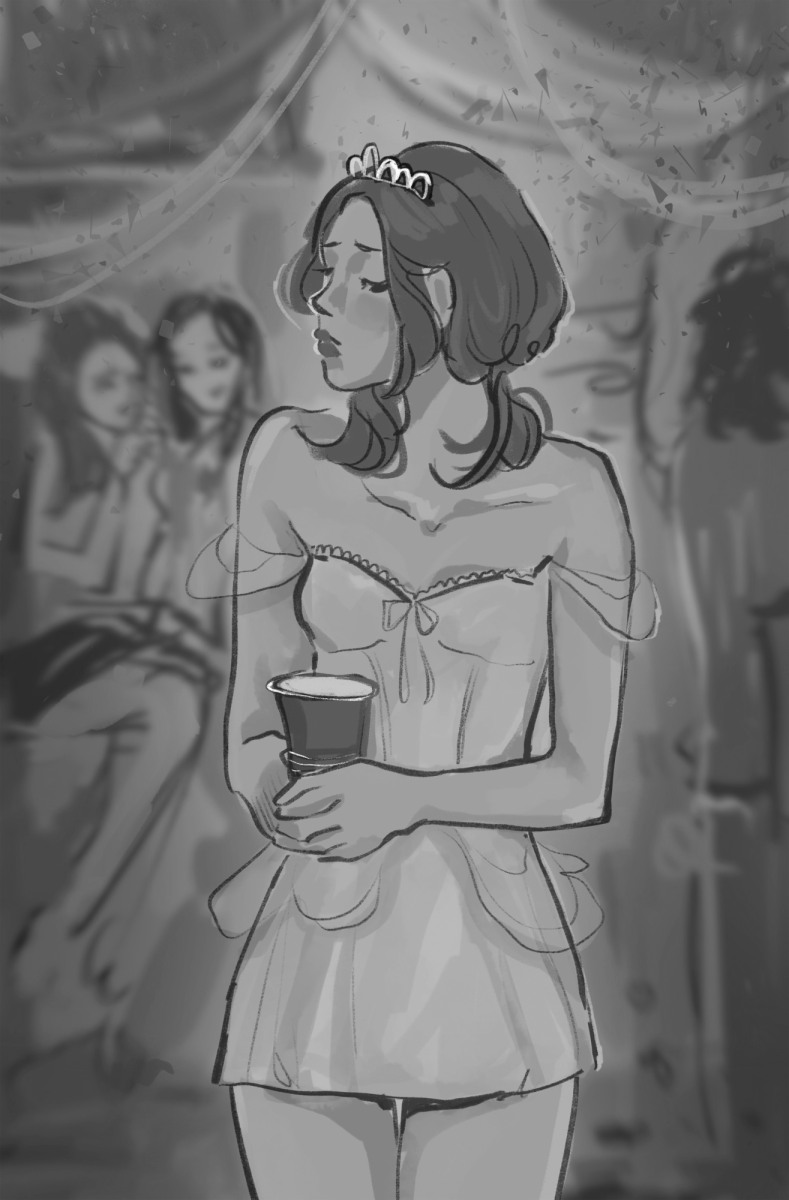About a year ago, the administration sent an email to all Upper School students warning them to be careful attending Halloween parties because of the increase in teenage overdoses due to alcohol and drugs in Los Angeles. As I read through the message, I reflected on my past experiences surrounding Halloween: going to party city, picking the perfect costume, decorating my home and trick-or-treating. Over the years, the standard of innocence during the time of Halloween shifted. I realized that I now struggle to find a socially acceptable, provocative costume and Halloween parties to attend. I found myself trying to identify when Halloween transitioned from a holiday of innocence to an opportunity for children to act too mature for their age.
Over the years, overly-sexualized content on social media replaced innocent videos and memes. Many online personalities have embraced “adult lifestyles,” Instead of trick-or-treat, adults celebrate Halloween with parties and provocative outfits.
Even if an influencer wants to party, drink and dress a certain way, they need to be aware that much of their audience is children. Social media can influence the health and lifestyle decisions that teenagers make for themselves, according to Raising Children Network.
Most influencers attend parties and post content from them. Alix Earle, a popular content creator on social media, regularly posts “Get-Ready-With-Me” videos to attend clubs or college parties. This content includes pre-gaming, doing drugs and drinking. Influencers encourage these decisions and market the holiday as a chance to partake in them.
Apps should enforce age restrictions during the sign-up process. The average age which children begin using social media is 12.6 years old, and about 56% of American youth have social media accounts, according to CNN Health. Influencers are not directly responsible for the actions that derive from their content. Having these age restrictions will prevent under-age minors on social media from being easily influenced to dress provocatively, attend parties, drink and do drugs. Enforcing age restrictions will put an end to the root of the problem of under-age children getting influenced by social media because under-age children will not be on social media at all.
Using social media to promote Halloween parties and substances increases the risk of legal and health complications for minors. Drinking under age is harmful for minors because alcohol can cause youth to have accidents and get hurt, according to the NIAAA. Halloween parties are problematic as they encourage children to participate in activities that may be harmful or inappropriate for their age group. As people get older, participating in classic Halloween activities like trick-or-treating becomes less socially acceptable. Teenagers are often judged or rejected by homes when trick-or-treating. 16% of adults today believe that teenagers should stop trick or treating at the age of 17 or 18 while 19% said 15 or 16 should be the stopping point, according to Today. This rejection leaves teens participating in grown up activities as they are unwelcome in other, more youthful activities.
Children look forward to picking out the perfect costume for Halloween. They think about which princess, superhero or cartoon character is the coolest thing to be that year. As people get older, style and modesty standards change: wearing revealing clothes is encouraged.
An influencer will post their Halloweekend costumes and call their tiara, blue cropped top tank top, Victoria’s Secret “Add-2-Cups” sparkly push up bra and blue mini skirt their “Sl**ty Cinderella Costume”. This pushes minors to dress too seductively for their age and let go of their childhood because of what is marketed to them on Halloween on social media.
As minors approach adulthood, it becomes more acceptable to dress provocatively. Part of this problem is the lack of age-appropriate costume options. When looking at classic Halloween stores, it is difficult to find costumes that are a good in-between of childlike and mature; children’s costumes are modest, while adult costumes are too revealing. There are no proper costume options that would fit a teenager and appeal to the current trends and appropriate teenage standards for modesty.
Girls are more impacted by this problem than boys. Girls are consistently over-sexualized and forced to grow up quickly by the media. Costumes for women are almost always more provocative than costumes for men. When searching up “school girl costume” Google images is filled with women in micro skirts, cropped tops and lots of chest cleavage whereas searching up “school boy costume” brings up pictures of little boys dressed in classic school uniforms, a white collared button-down, bowtie and dress pants. This creates a more unhealthy and over-sexualized environment for young girls trying to celebrate Halloween.
Influencers should embrace the youth and innocence of Halloween as well as encourage their younger audience to dress and participate in age-appropriate activities. Teenagers should not be pressured into growing up so quickly and should be motivated to find an appropriate balance between innocence and maturity. Our school should encourage students to practice safe habits when celebrating Halloween, and be mindful when trick-or-treating and attending parties. Halloween is only a small portion of the problem of teenagers growing up too fast as a result of societal standards. Taking steps against the increasing trend of overly mature costumes and practices on Halloween will set a standard for embracing innocence.































